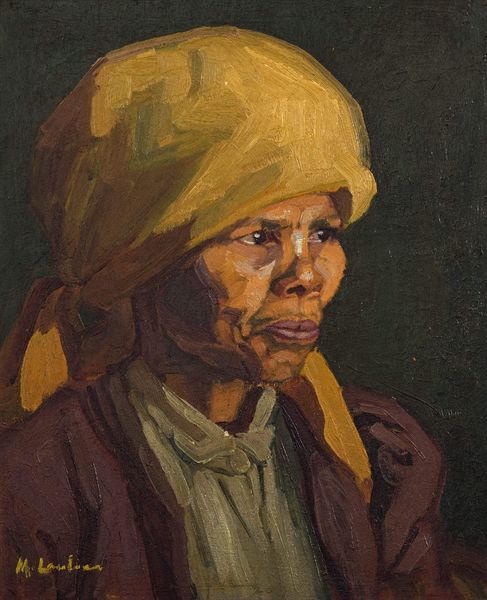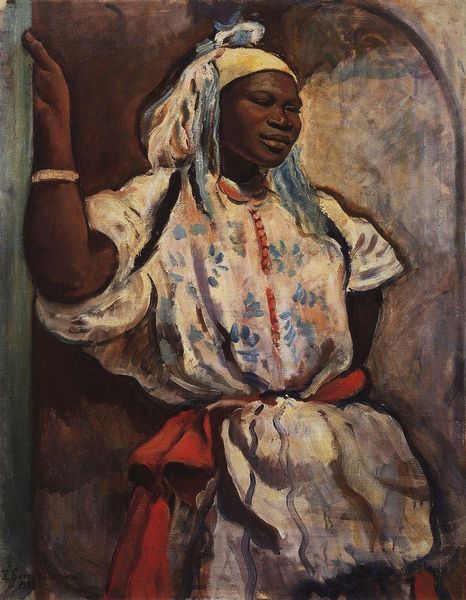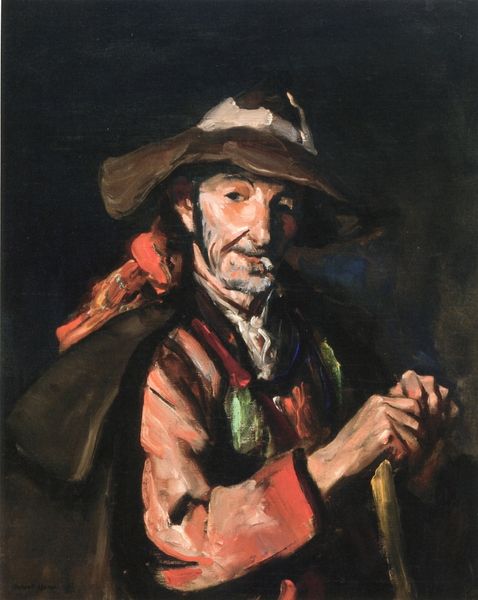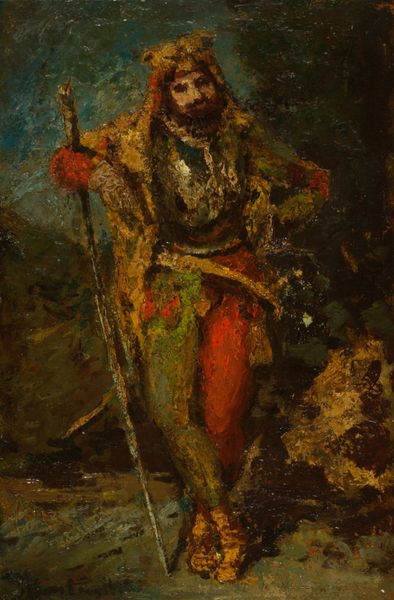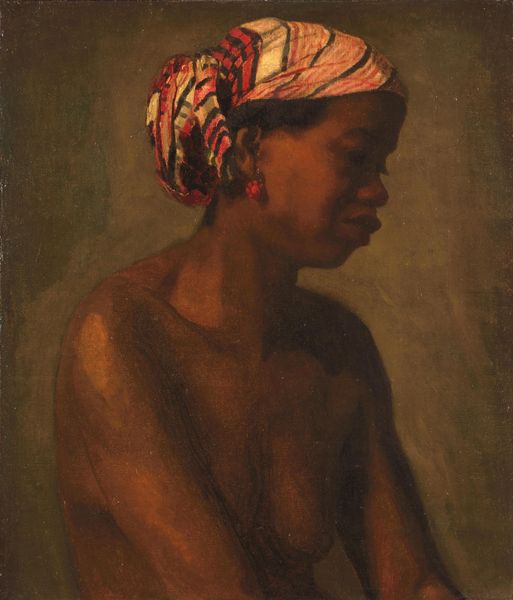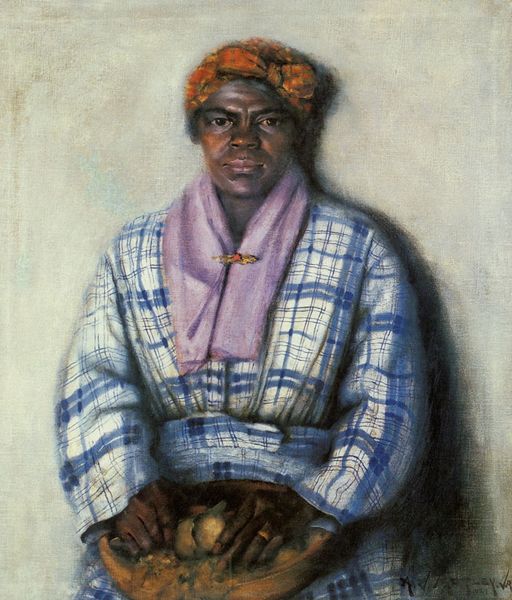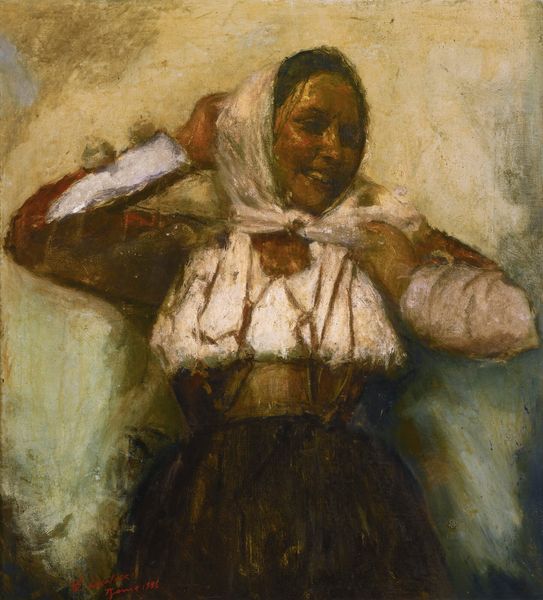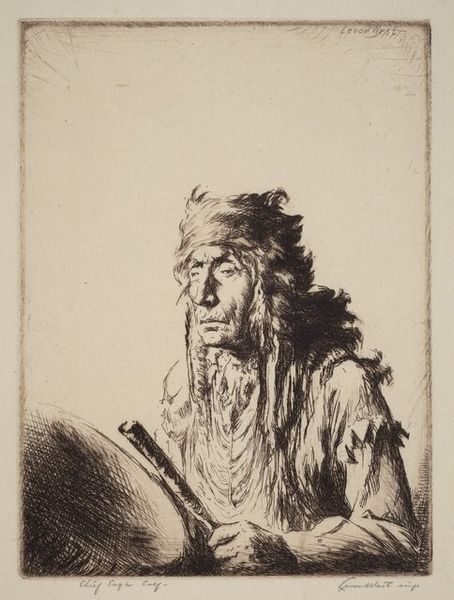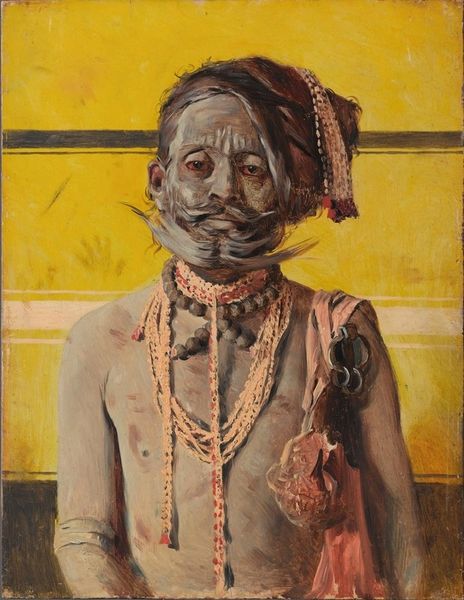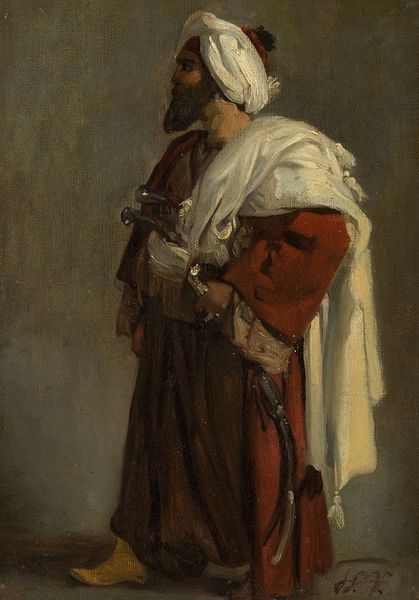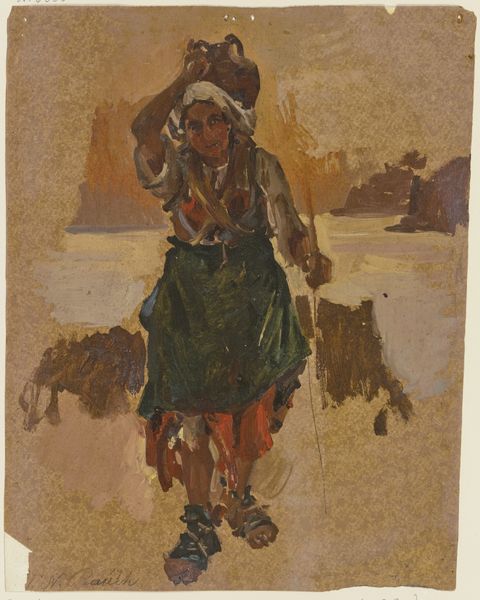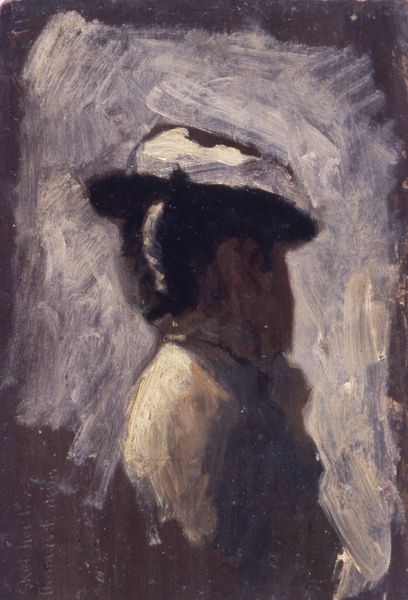
painting, oil-paint
#
portrait
#
dutch-golden-age
#
painting
#
oil-paint
#
charcoal drawing
#
oil painting
#
genre-painting
#
realism
Copyright: Public domain
Curator: Standing before us is Isaac Israels’ oil painting, "Portrait of the Wounded KNIL Soldier Kees Pop," created in 1882. You can currently find it here at the Rijksmuseum. Editor: There's something immediately affecting about it. A deep weariness emanates from this figure, a heavy gravity pulling him downwards. The red of the headscarf provides the only visual levity in an otherwise muted palette. Curator: That red, juxtaposed with his dark complexion, holds significant cultural weight. Red ochre, found across the world, often symbolizes lifeblood and spiritual protection. Think of similar adornments in other cultures, perhaps echoes of ritualistic practices. Editor: I see him carrying the weight of something beyond a mere physical wound. The white sling creates this triangular shape, directing your eyes right to his face; but the eyes themselves betray… well, everything, really. I find myself projecting all sorts of narratives onto him. Curator: He does hold the viewer's gaze, doesn’t he? Consider the symbolism embedded in the military attire - the jacket, the medal, contrasted against the very raw and vulnerable sight of that roughly-fashioned sling. What kind of narrative continuity can we create around "the wounded soldier" and "Dutch colonialism?" Editor: That tension… it's palpable. Almost a refusal to portray the usual romanticized vision of military heroism. There's almost a sketch-like unfinished quality. Like the story itself is unresolved, lingering, raw and uncomfortable. Is the realism used in a style like that adding to that mood? Curator: Precisely. Israels uses a realist lens to depict this man, and this piece, which resists the grandiose and instead centers the individual’s suffering and resilience. What an opportunity to confront histories of Dutch colonialism head-on. This invites conversations about power, exploitation, and the human cost of empire. Editor: So, beyond just the visual impact, it is a window into that era, but, personally, it gives me something more than facts - a genuine sense of a feeling I have difficulty understanding fully; it’s something unique I can apply and consider to similar art, now. Thank you! Curator: And, hopefully, helps you better see the symbol, and history behind it. Thank you, as well.
Comments
No comments
Be the first to comment and join the conversation on the ultimate creative platform.
